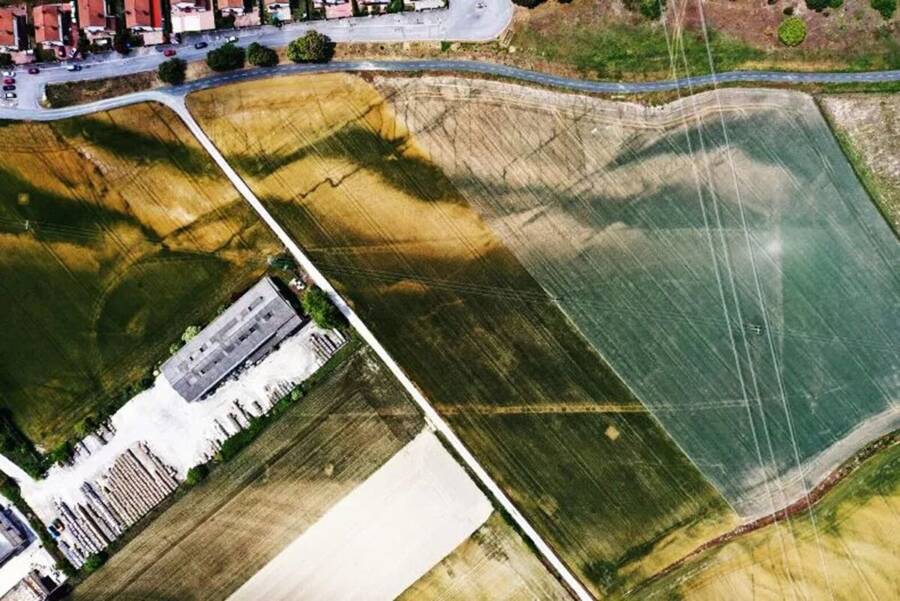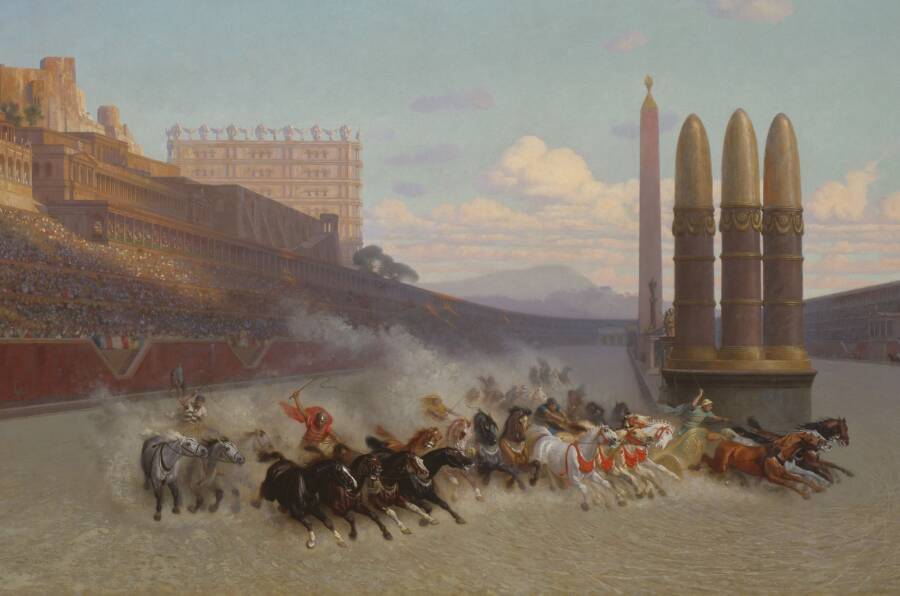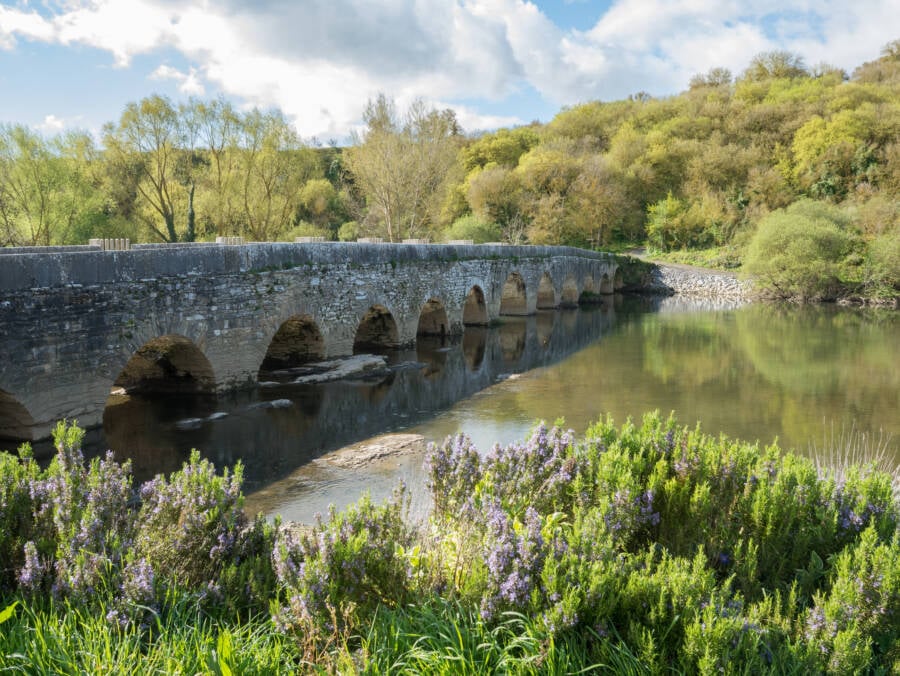The Roman circus found at the remains of Iruña-Veleia in northern Spain would have once seated nearly 5,000 spectators along its 920-foot track for chariot racing.

ArkikusAn overview of the site of the ancient Roman circus found in northern Spain, with traces of the chariot racing track still visible.
Archaeologists in northern Spain recently announced the discovery of a large Roman-era venue that once hosted horse-drawn chariot races.
Aerial investigations at the site of Iruña-Veleia, an ancient Roman city located in what is now the Álava province of the Basque Autonomous Community, revealed the outline of the ancient circus, showing that it measured roughly 920 feet long and 235 feet wide. Researchers said that even without excavating the site, these dimensions and the overall form of the outline clearly reveals its identity.
Archaeologists Discover The Site Of An Ancient Roman Circus In Spain
The discovery of this Roman-era circus was announced by the Spanish start-up, Arkikus. The team works to create virtual reconstructions of ancient sites based on analysis using modern equipment. In this instance, the outline of the circus was discovered via modern and historical aerial photography, after which light detection and ranging (LiDAR) was used to map the area.
LiDAR, a remote sensing method involving the use of laser pulses fired at the ground, allowed researchers to generate a 3D model of the area, mapping its topography and highlighting man-made features that would not be visible to the naked eye. From this data, and the site’s measurements, researchers determined that the circus would have been able to hold a capacity of roughly 5,000 people in its time.
The project was supported by the Provincial Council of Álava and the Basque regional government to document the Roman circus as part of a larger systematic review of the site’s surface, which covers approximately 620 acres. In addition to the circus, the project identified ancient streets, public squares, residential neighborhoods, potential religious buildings, as well as water and sanitation infrastructure.

Wikimedia CommonsA rendering of ancient Roman chariot racing at the famed Circus Maximus in Rome.
Roman circuses were often used to hold chariot races. This discovery marks the third circus site found in the northern half of the Iberian Peninsula, with the other two being found in present-day Tarragona and Calahorra.
Arkikus researchers say these finds show just how significant Iruña-Veleia had been in antiquity, serving as a stopping point for travelers along the Roman road, which connected what is now Astorga, Spain, and Bordeaux, France.
The Larger History And Culture Of The Basque Region

Wikimedia CommonsA Roman bridge that leads to Iruña-Veleia.
Today, the site sits near an important urban hub in the Basque territory, which has its own language that’s known locally as Euskara. Euskara is unique as it is considered a “language isolate” by linguists, meaning it has no direct link to any other known family of language.
Many consider Euskara to be possibly the last surviving descendant of the “Paleo-European” languages that predate the Indo-European languages brought over via the Eurasian Steppe during the Bronze Age. While Indo-European languages are undoubtedly the predominant languages in the region today, the Basque language still maintains more than 800,000 speakers. It has also seen something of a revival in more recent years, as it remains a strong source of cultural identity for the Basque people, with significant efforts being made to preserve the language.
The Basque people are an ethnic group native to the Basque Country, straddling northern Spain and southwestern France. They have a unique identity shaped by a history of resistance and independence movements. Their culture emphasizes strong community ties, traditional festivals, and distinctive cuisine. Despite regional challenges, the Basque people maintain a vibrant heritage and continue to advocate for their cultural and political autonomy.
After reading about this Roman circus found in Spain, learn all about the Roman gladiator Spartacus. Then, read about Commodus, the Roman emperor who went mad with power.





